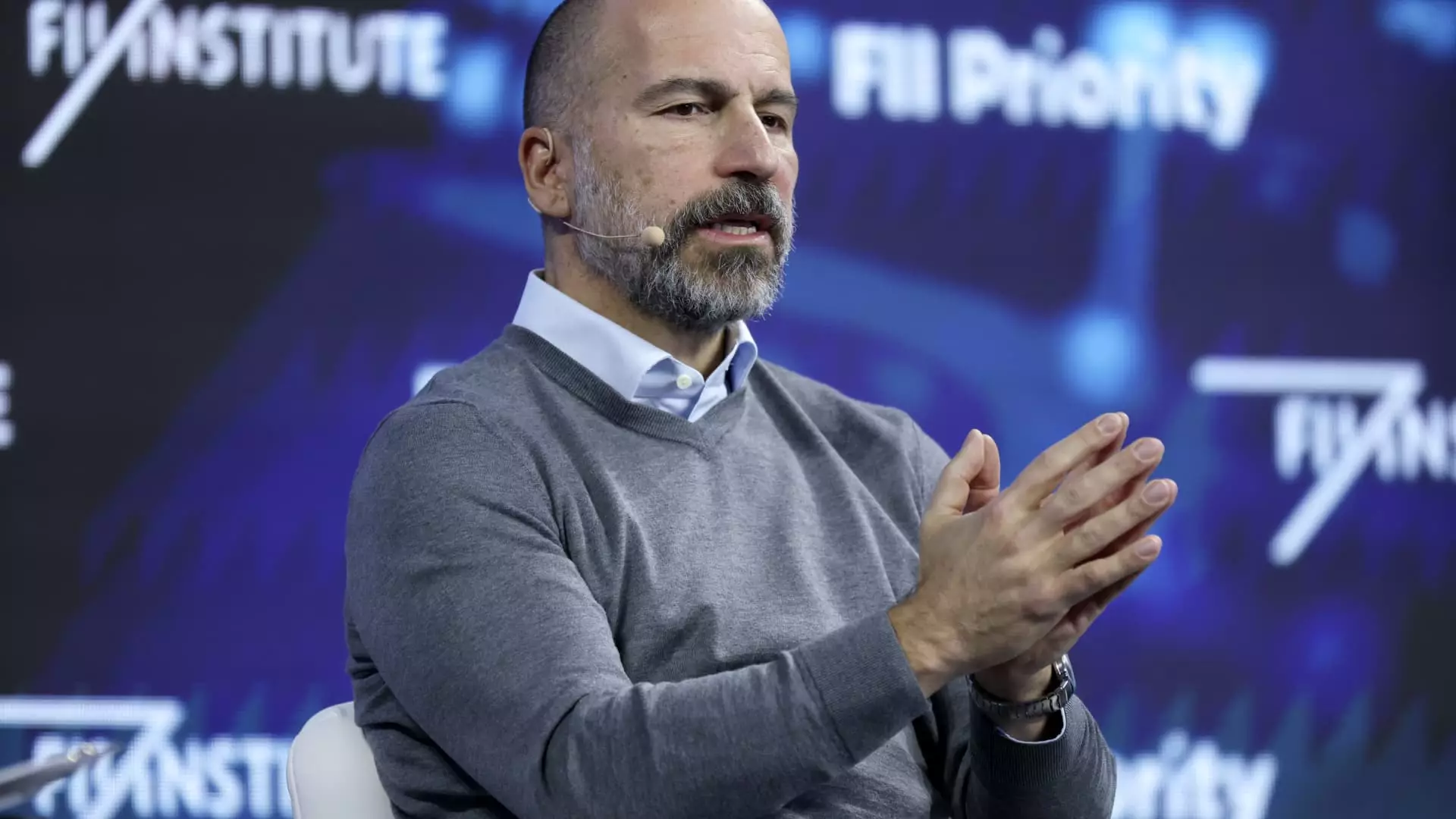Uber’s recent report for the first quarter of the year demonstrates a company at a crossroads. While earnings exceeded analysts’ expectations—delivering 83 cents per share compared to the estimated 50 cents—the firm faced a significant disappointment in revenue, totaling $11.53 billion, just shy of the anticipated $11.62 billion. This seemingly minor shortfall had an immediate impact on Uber’s stock, which dropped by about 5%. Such a reaction raises questions about investor confidence and the sustainability of Uber’s growth strategy in an increasingly competitive landscape.
Revenue growth is crucial for a company like Uber, especially as it navigates the complexities of its expansive business model, which spans ride-hailing, food delivery, and logistics. With revenue growth of 14% compared to the same quarter last fiscal year, reaching $10.13 billion, it is evident that Uber is pushing forward, yet the slight lag behind expectations must weigh on management’s mind. The nuances between rising earnings and disappointing revenue growth suggest that the company may be experiencing operational hurdles that could spell trouble moving forward.
Shifts in Corporate Culture and Policies
In line with maintaining operational efficiency, Uber has announced shifts in its workplace policy. Employees are now required to return to the office three days a week, an increase from the previously mandated two days, signaling the company’s desire to enhance teamwork and collaboration. CEO Dara Khosrowshahi emphasized this need during a recent meeting, arguing that the company’s success hinges on shared physical spaces among employees. However, this move could create friction among team members who have adapted to a remote or hybrid work model, potentially leading to dissatisfaction or even attrition.
Moreover, a notable change in Uber’s paid sabbatical policy—extending the time required for eligibility from five years to eight—could be indicative of a broader strategy to tighten operational costs. While management may see this as necessary for company efficiency, employees might perceive it differently, revealing a tension between leadership’s financial rigor and employee satisfaction.
The Shadow of Legal Troubles
It’s not just corporate policy that poses challenges for Uber. The Federal Trade Commission’s lawsuit against the company, accusing it of deceptive practices related to its subscription service, Uber One, adds a layer of complexity to its operations. Khosrowshahi’s claim that 60% of Uber Eats’ gross bookings come from Uber One members underscores the service’s growing importance; however, legal troubles could derail this momentum. The lawsuit suggests that consumer trust may be at risk, which can have dire consequences for any business. Khosrowshahi’s assertion that the cancellation process for Uber One is straightforward contrasts with the allegations made by the FTC, creating a narrative that could undermine Uber’s image if not effectively managed.
The Drive Towards Autonomous Vehicles
Amidst these challenges lies a glimmer of hope: Uber’s commitment to developing autonomous vehicle technology. Khosrowshahi views this as a transformative opportunity for the company. Reflecting a strategic pivot towards future-facing technology, Uber’s partnerships with AV innovators like Waymo, Volkswagen, and Aurora hint at a solidified belief in the company’s ability to stay ahead of the competition.
In March, Uber’s introduction of robotaxi services in Austin, Texas, in collaboration with Waymo exceeded expectations, showcasing an operational success that could redefine urban transportation. The statement that Uber’s fleet of 100 Waymo vehicles in Austin operates with remarkable efficiency—busier than 99% of local drivers—is a testament to the evolving landscape of ride-hailing, and it reinforces Khosrowshahi’s confidence in autonomous technology as a cornerstone of what’s to come.
Growing Consumer Engagement
Despite the hurdles of revenue growth and a challenging economic environment, Uber reported a significant increase in active monthly users, reaching 170 million—a 14% rise year-over-year. This uptick in user engagement suggests that the foundational aspects of Uber’s model continue to resonate with consumers, perhaps indicating an overall brand loyalty that could be harnessed for future growth. The staggering 3.04 billion trips booked in the quarter, climbing 18% from the previous year, emphasizes that while revenue targets might vary, customer usage remains a bullish signal for the company’s trajectory.
Uber’s current phase portrays a company in a dynamic environment filled with both opportunities and pitfalls. While the significant strides in technology and customer engagement highlight its potential, the looming challenges around revenue discrepancies, legal hurdles, and shifting employee dynamics could define Uber’s path forward. As they navigate the complexities of modern transportation, how Uber chooses to leverage its strengths and address its weaknesses will ultimately dictate its success in the coming years.


Leave a Reply